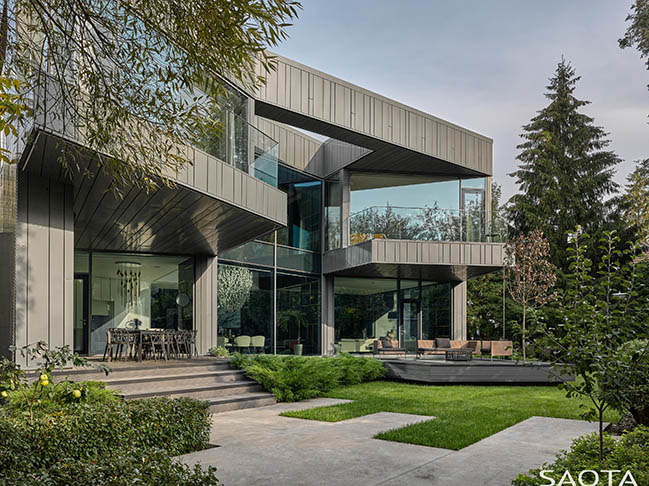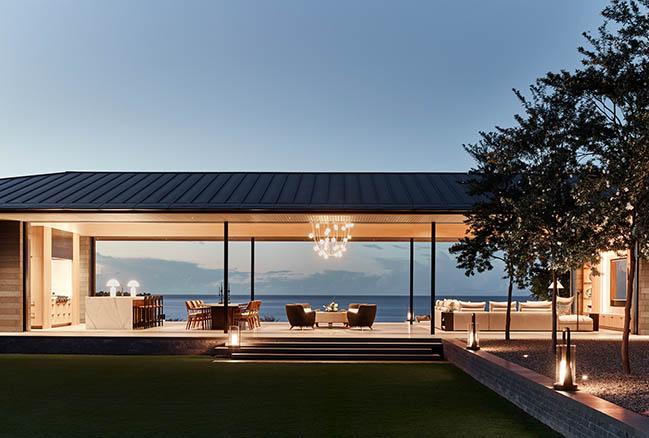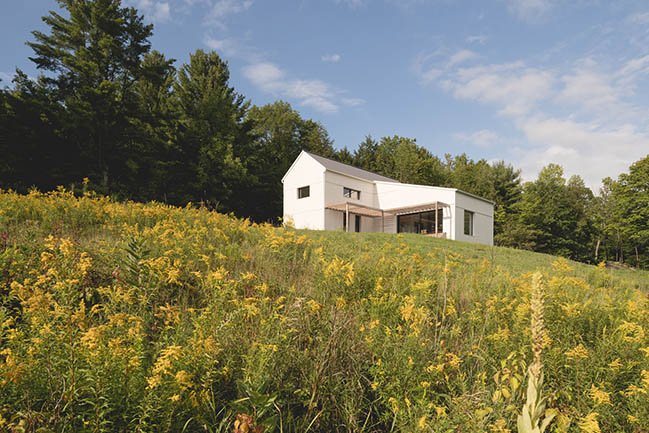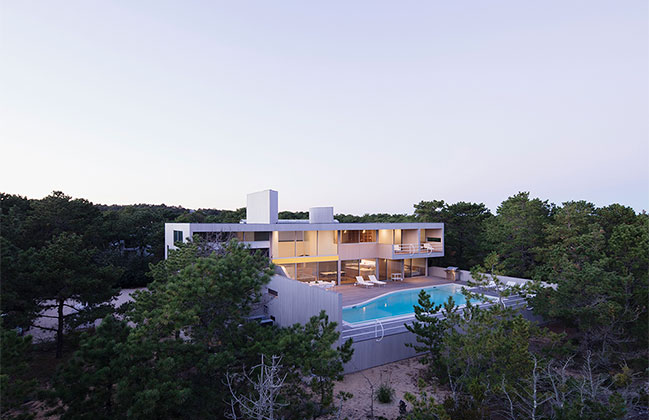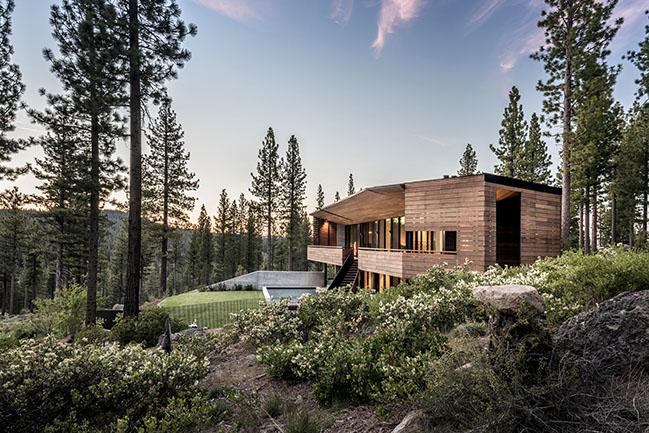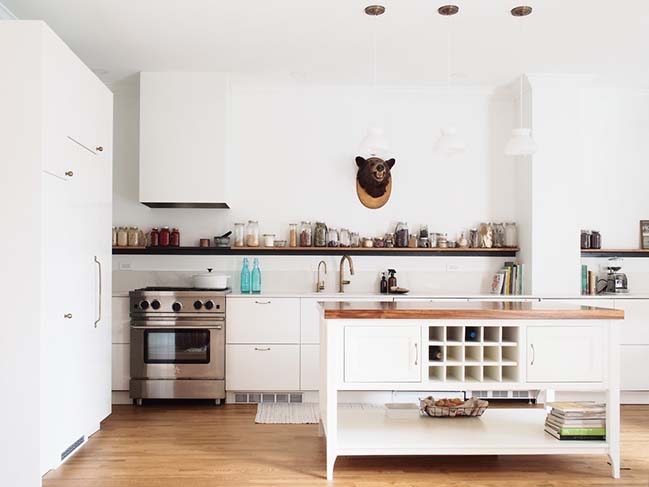08 / 11
2021
Situated alongside a lava flow dating from 1801 on the leeward coast of Hawaii, this 10,361-square-foot residence was designed as a modern interpretation of indigenous island architecture and a way to connect the occupants to nature, the region, and its culture. Rather than orienting the house directly to the view, the home’s living spaces are set at an angle, resulting in glancing coastal views that reveal the visual drama of the natural setting.
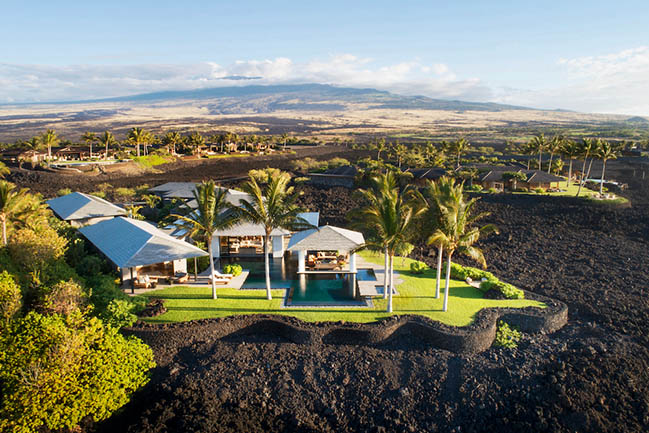
> Mermaid Beach Residence by B.E Architecture
> South Coast House by Indyk Architects
From the architect: The home is organized as a series of interlocking yet separate hale (pavilions), with the resulting spaces between the hale becoming as important to the experience as the hale themselves. This exploration of void or emptiness, which the Japanese call “Ma,” is meant to sharpen focus on the definition of meaning of space itself, our relationship to it, and what remains. For this house, traditional design elements are tempered through a Japanese sense of restraint and interest in craftsmanship. The result is an aesthetic the architects describe as tropical minimalism.
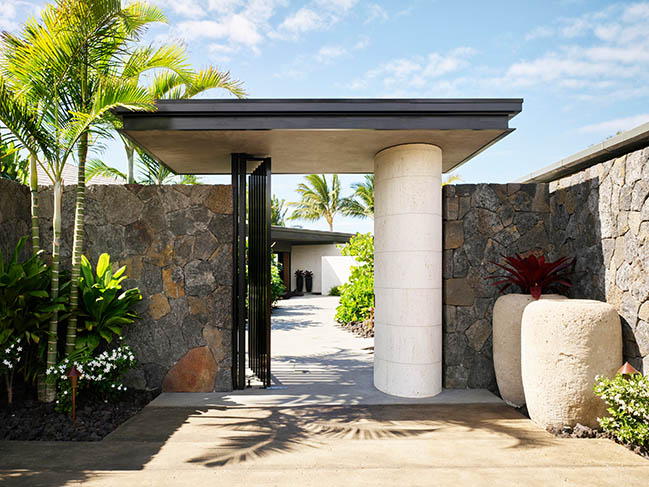
Exterior materials were selected for their natural beauty and durability, as well as their contribution to the minimalist aesthetic and quiet sense of restraint. Exterior finishes include zinc metal roof shingles, black anodized aluminum doors and window frames, painted steel fascia and columns, stone terraces, walls and columns, and integral color cement plaster. Meeting the spirit of the community design guidelines hipped roofs were used for the individual pavilions. Flat roof where solar panels to be hidden from sight were used on connecting roofs. Landscape plantings contributes to the exotic, yet ultra-simple aesthetic. Reflecting pools work their way in and around the pavilions, further enhancing Zen-like aesthetic and adding to the calming influence living among water elements.
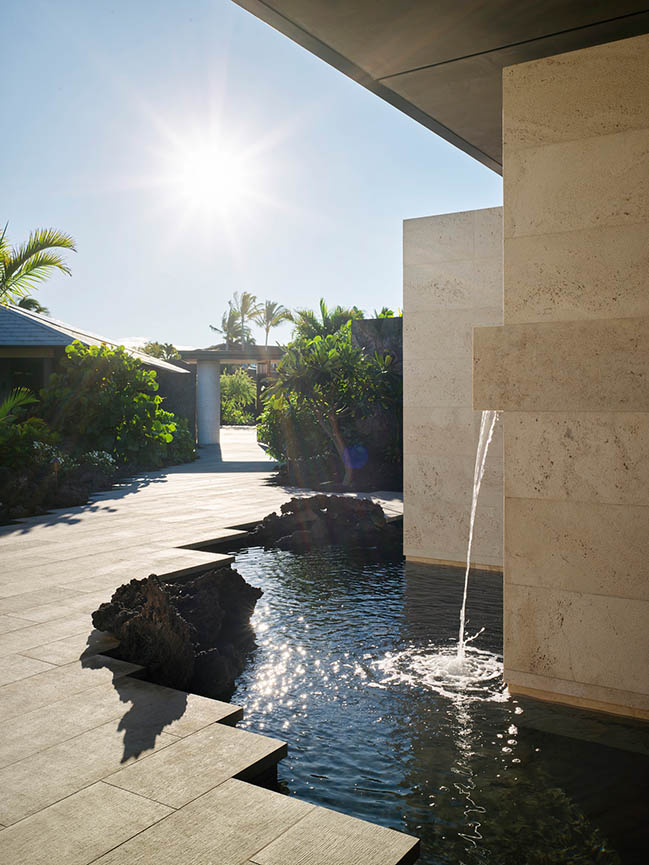
The interior aesthetic is restrained. Finishes include stone and teak floors, grayish stained white oak ceilings and cabinetry and millwork, granite counters, and veneer plaster walls. Sliding architectural wood screens throughout the house create privacy between spaces and, but create an atmosphere of refinement and mystery.
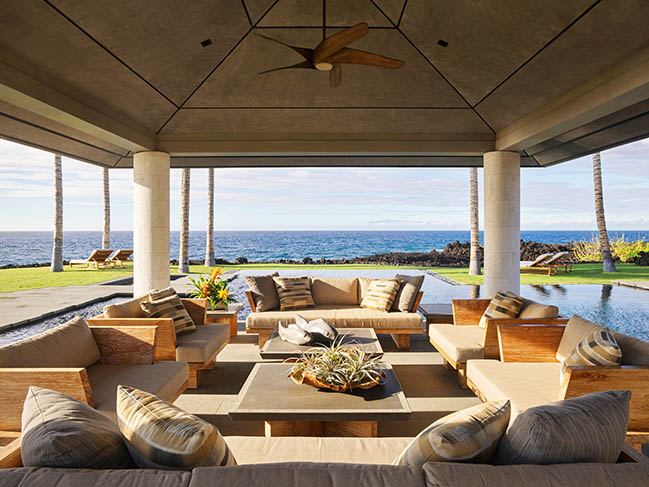
Furnishings are minimal with a focus on signature pieces, including a contemporary free-form wood sculpture that was found in Bali, as well as the custom dining table and lychee wood coffee tables. Bedroom headboards were also sourced from Bali. Polynesian tapa patterns were carved into teak for many pieces of furniture. Te primary bathroom features dynamic architectural elements such as carved walls of Calacatta marble including a stone shower wall. The cool marble is contrasted with a teak vanity. Limestone walls behind the master bedroom headboard and on the back wall of the kitchen were inspired by a graphic kimono pattern. The guest hale features a wall of surfboards by Firewire/Sig Zane Design, a custom albizia and koa long board by Gary Young, and a rare “ulu” wood surfboard handcrafted by Tom Pohaku which was wave-ridden before it was hung.
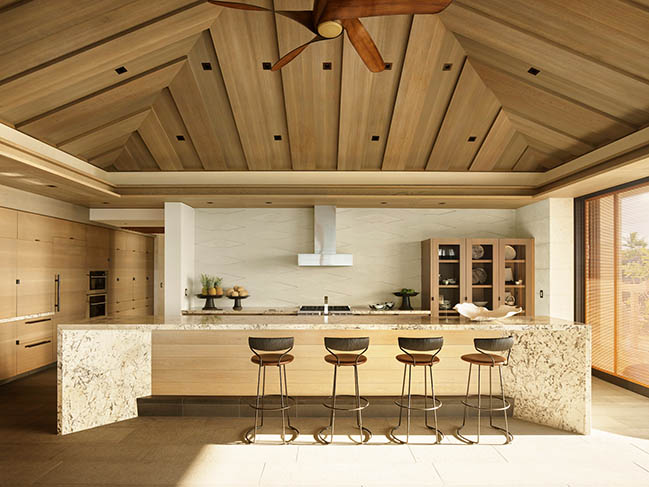
Architect: de Reus Architects
Location: The Big Island, Hawaii
Project Architect: Mark de Reus
Project Manager: Eric Anderson
Interior Designer: Philpotts Interiors
Landscape: David Y. Tamura Associates, Inc.
Structural Engineer: Kahiau Design Group
Photographer: Matthew Millman
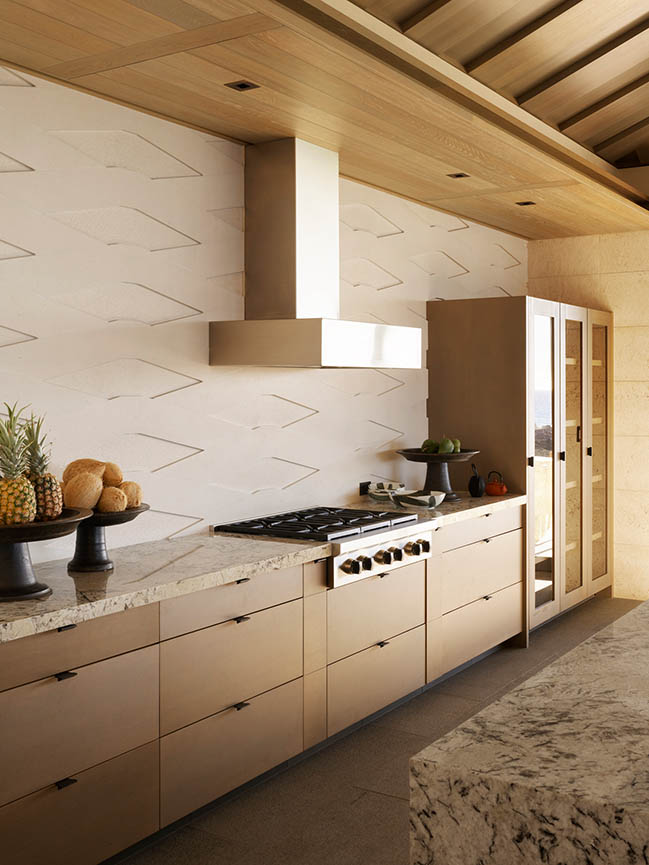
YOU MAY ALSO LIKE: North Beach by Heliotrope Architects
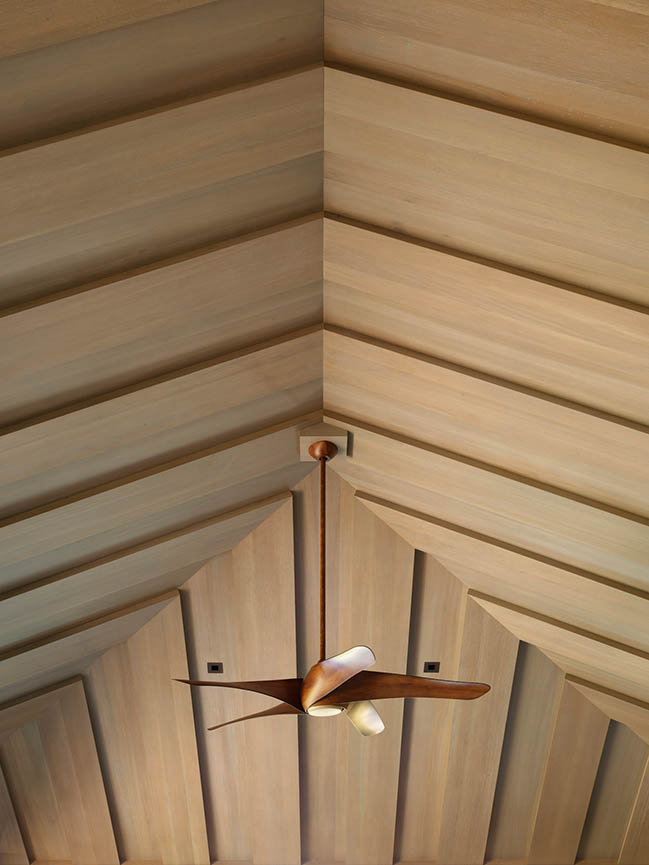

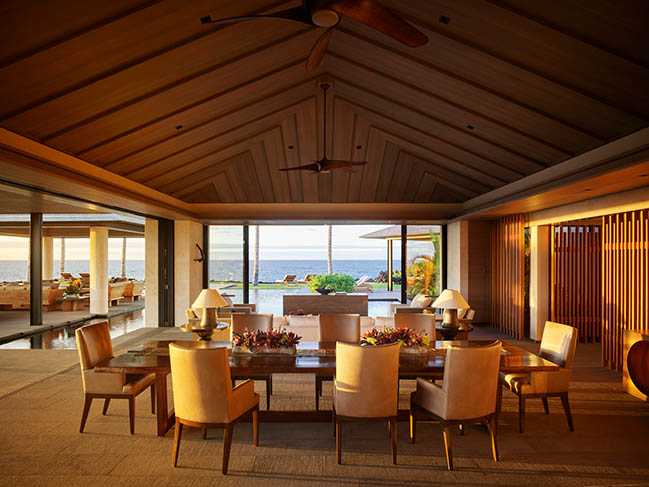
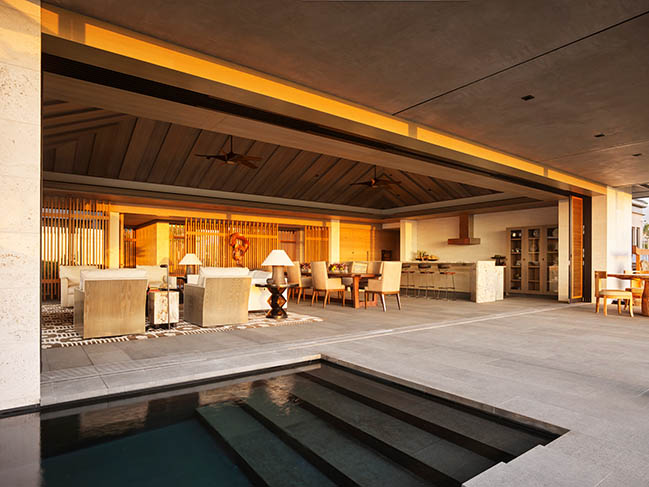
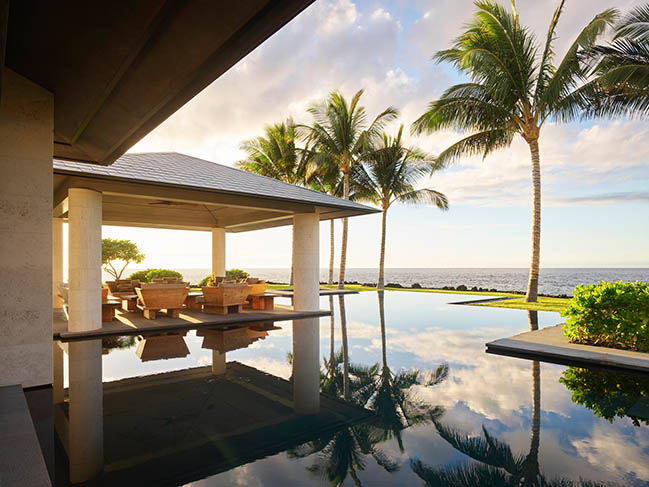
YOU MAY ALSO LIKE: Helensvale Haus in Gold Coast by Happy Haus
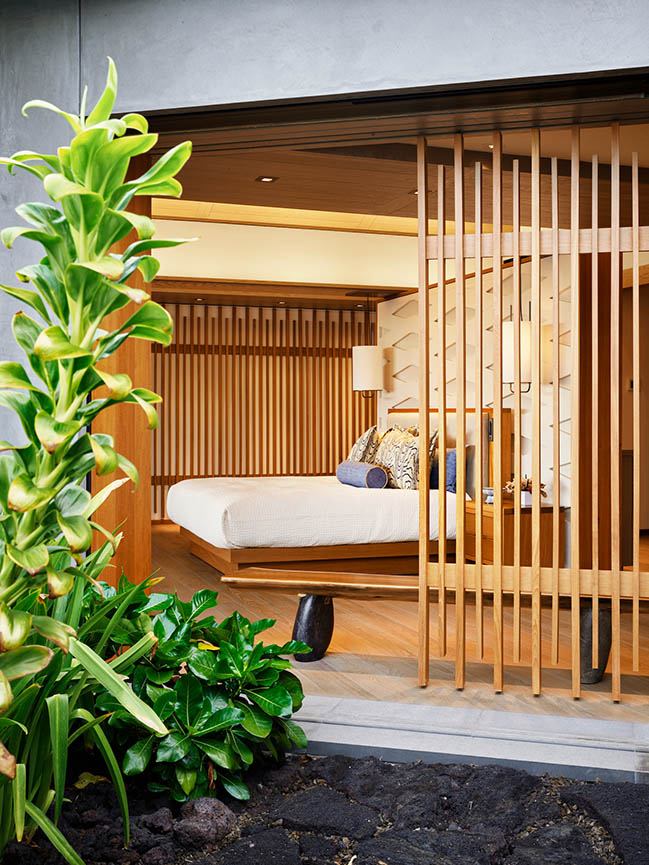

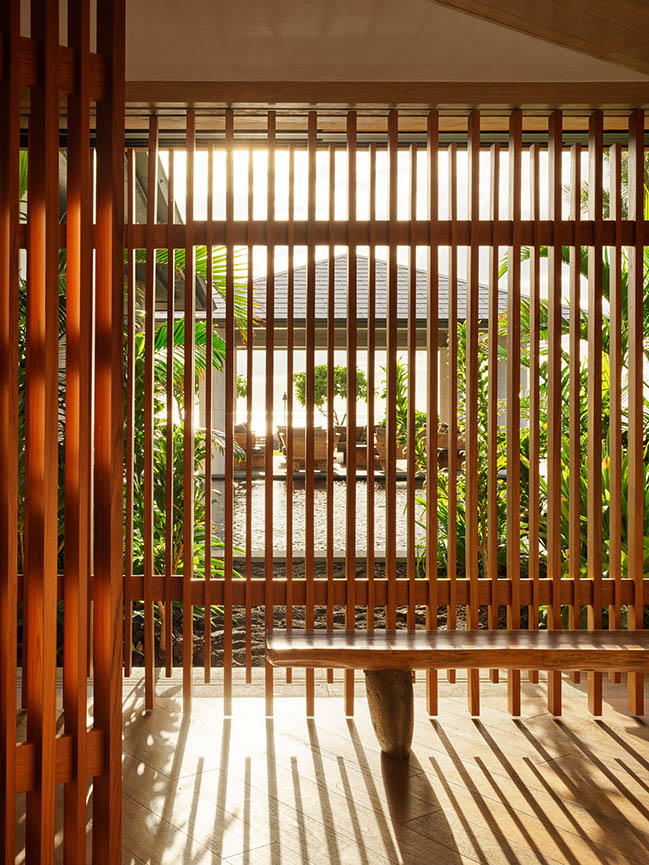
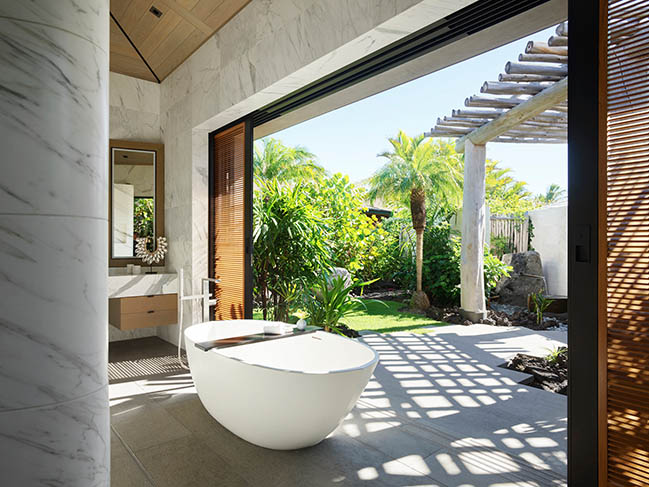
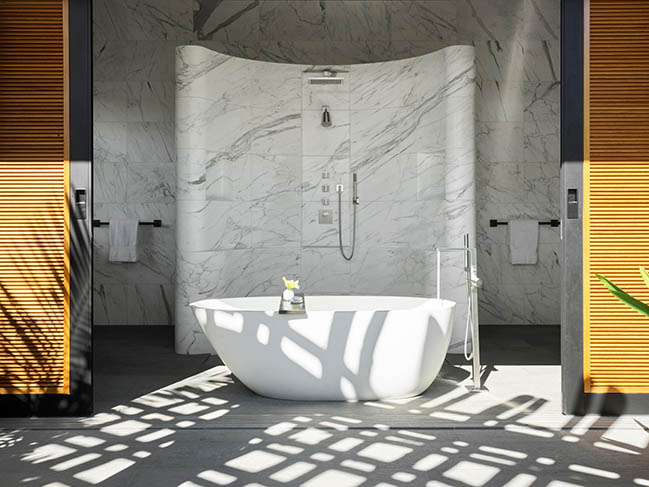

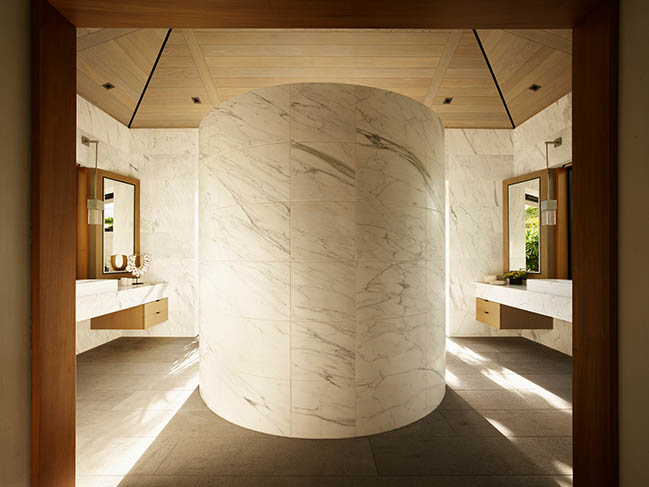
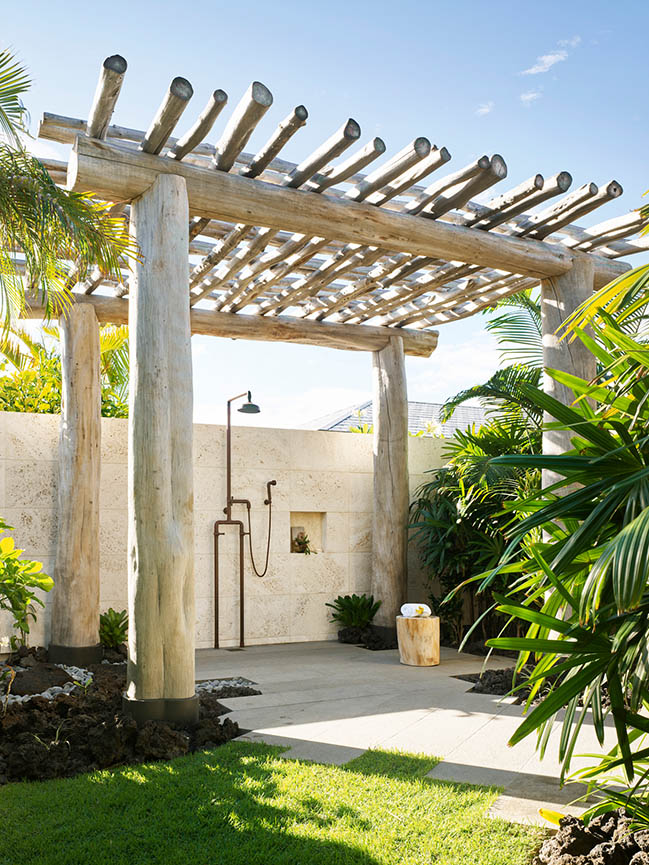
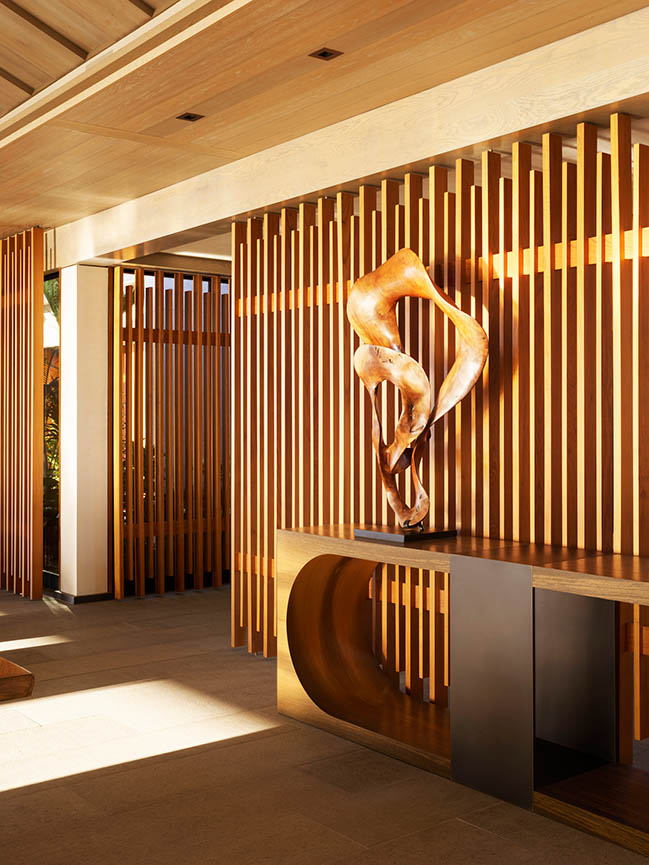
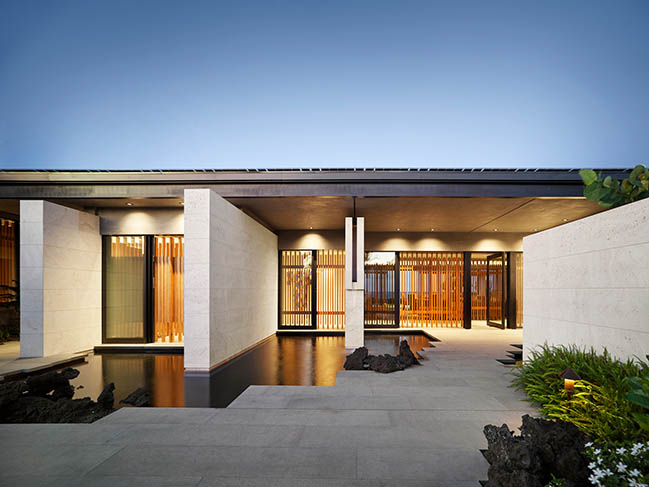
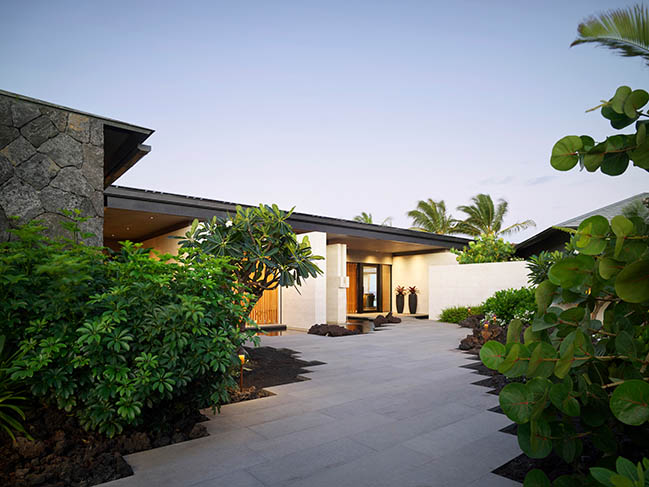
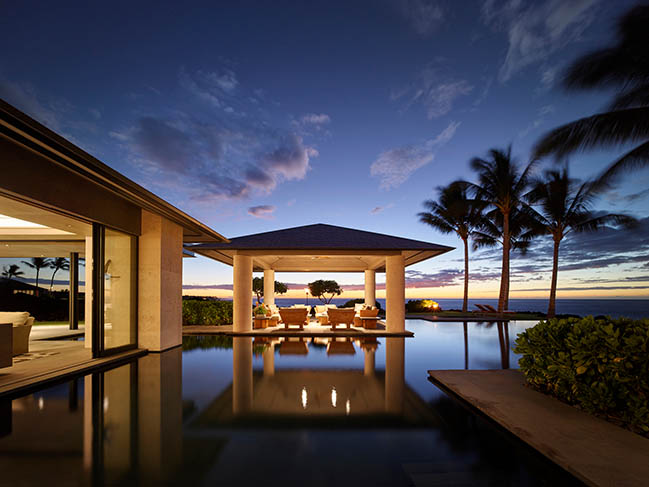
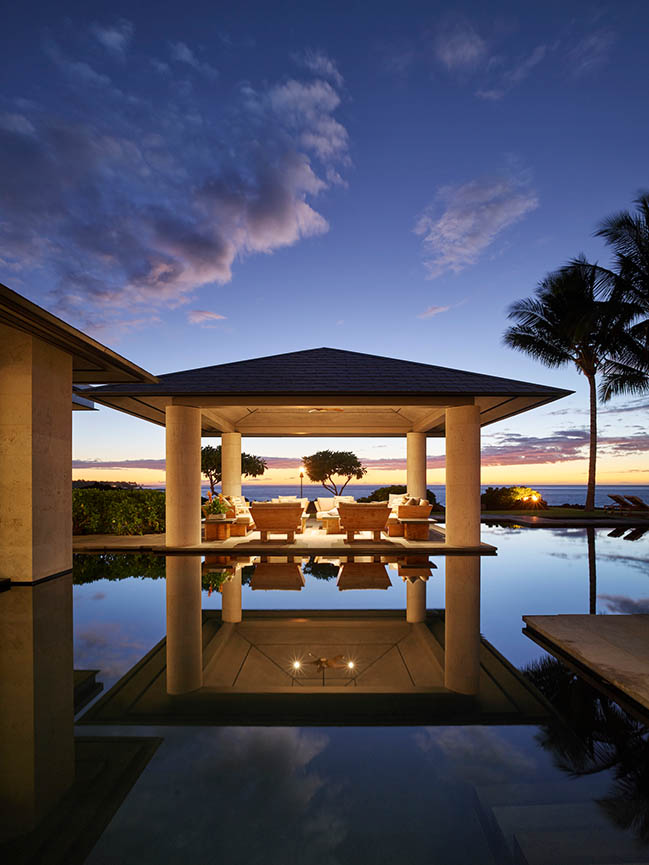
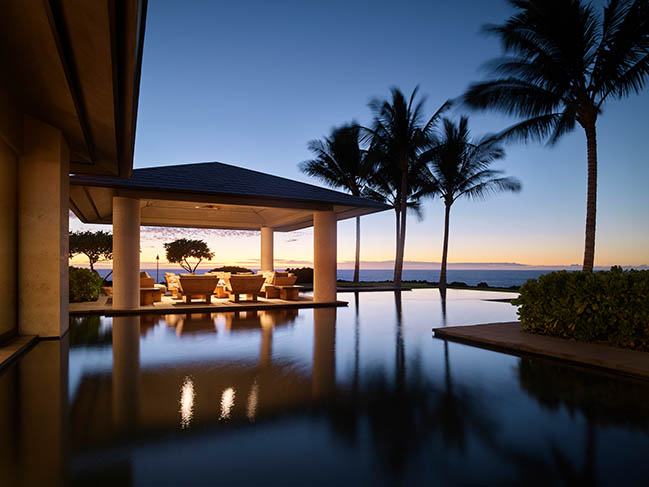
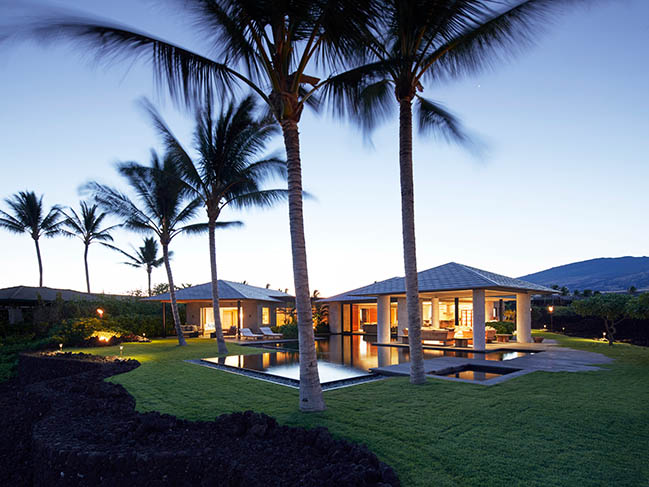
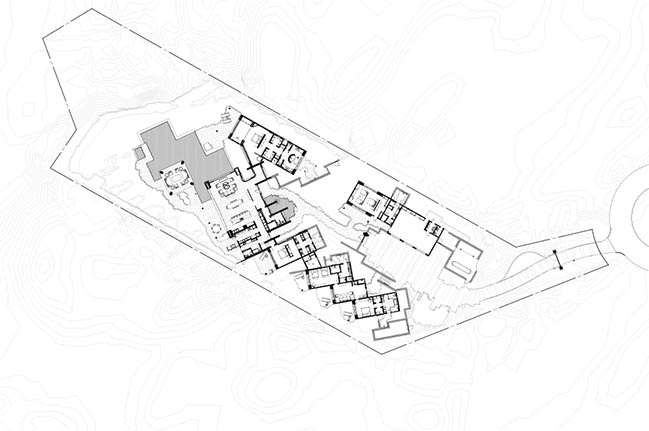
Kohala Coast Residence by de Reus Architects
08 / 11 / 2021 Situated alongside a lava flow dating from 1801 on the leeward coast of Hawaii on the Big Island, this 10,361-square-foot residence was designed as a modern interpretation of indigenous island architecture...
You might also like:
Recommended post: Hutchison Apartment in Montréal by Atelier SUWA
